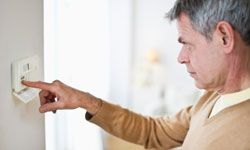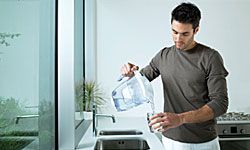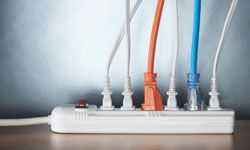If you have the funds and the ambition, and you live in a windy part of the country, a residential wind turbine could cut your energy costs dramatically.
Here's how a wind turbine works: Gusts of wind spin a series of rotor blades mounted on top of a tower, driving a generator that transfers the wind's kinetic energy into AC power -- the same type of electricity that flows through your electrical sockets. The costs and returns of a residential wind turbine can vary widely, but according to the Sierra Club, equipment and installation of a 3-kilowatt wind turbine costs between $15,000 and $21,000, and can reduce your monthly electric bill by up to 60 percent. The turbines can last up to 30 years, and they can pay for themselves in as few as six years depending on the model, your area's wind generation and your electricity costs [source: Sierra Club].
There are significant drawbacks to wind turbines, though. Government subsidies can drive down their costs, but they're also subject to the collective will of lawmakers. If you're not connected to your local power grid, you'll need a back-up power source to keep the lights on when the wind isn't blowing. You need to navigate local zoning laws -- most ordinances have a height limit of 35 feet (10.7 meters), while the optimum height of a turbine is as high as 100 feet (30.5 meters) -- and you might need to pay for noise studies and other analyses before you can begin installation [source: Sierra Club].
For lots more information on money-saving gadgets, see the links on the next page.





